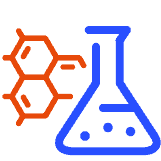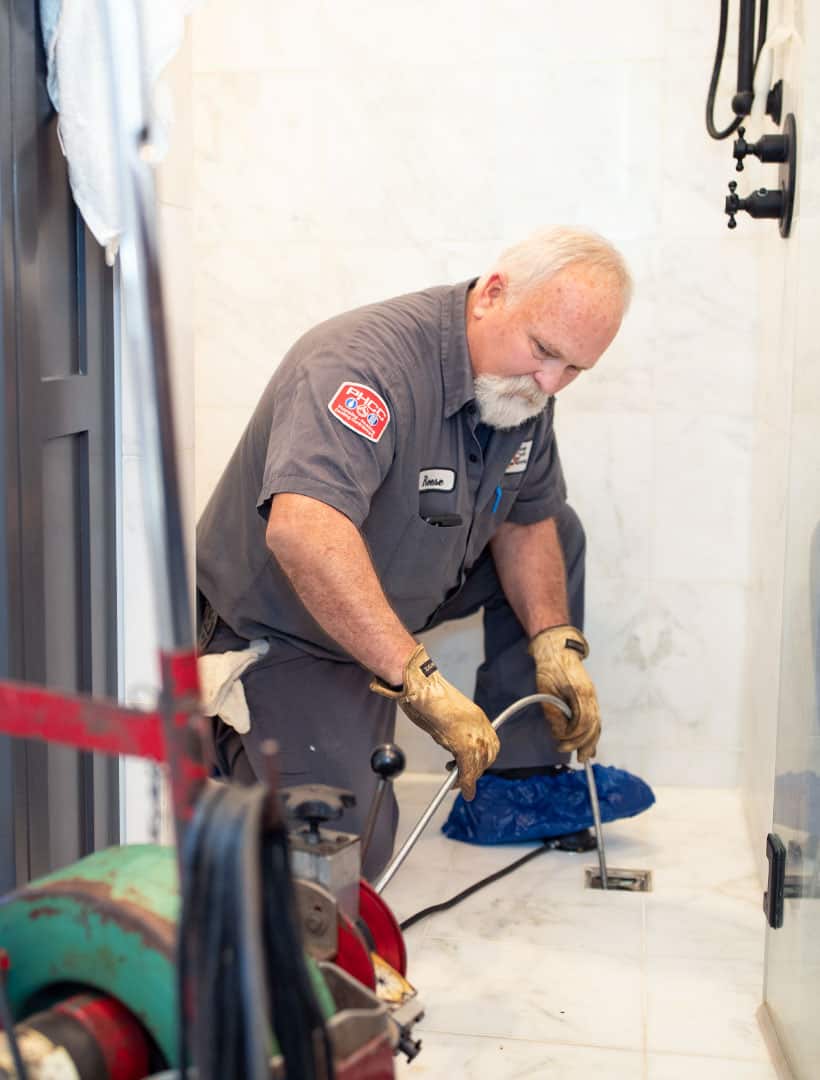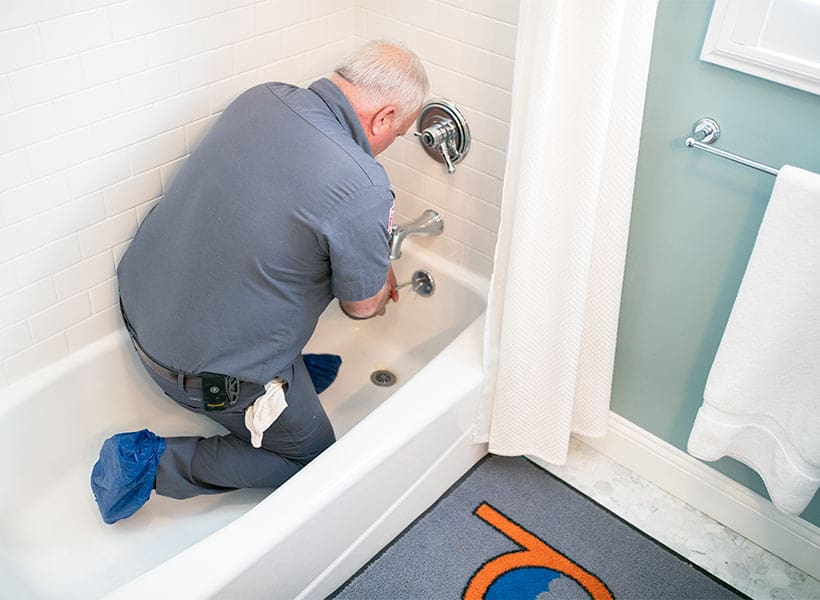Sewer Line & Drain Cleaning & Repair
Certified Drain Unclogging & Clearing in Orange County, CA
A blocked drain is a nuisance.
A blocked sewer line is a threat to your health and property.
Don’t wait for a slow drain to become an even bigger problem, where wastewater or sewage backs up into your home, leading to water damage and costly repairs.
Grease build-up, hair, tree roots, children’s toys, and other objects are the most common causes of clogged pipes and drains.
Sewer and drain cleaning isn’t a do-it-yourself job. A small mistake can lead to catastrophe; drain cleaners, in particular, are harsh chemicals that can harm your pipes.
A simple rooter job will no longer do the trick when your pipes are compromised. We’ll have to replace or reline the pipes.
Call us now if you notice hints of trouble with your drainage. We’ll find the blockage and clean your pipes with state-of-the-art technology that will make your pipes almost like new.
Signs of Sewer Line or Drain Blockage
A slow-draining pipe is the first clue that you have a clogged drain. Other symptoms include:
- Gurgling or bubbling sounds coming from a toilet, sink, or tub
- Flooding or leaks anywhere in the building
- Foul odor coming from drain pipes
- Unusual mold or mildew growth
- Insect or rodent infestation
Grease buildup, food waste, or a foreign object can clog a drain. Hair and soap residue are the usual suspects for bathroom drain clogs, while tree roots can invade your sewer line.
You can start with a plunger to see if that clears the clog. Otherwise, call us. It’s time for the pros.
We’ll check the drains first, and if the clog persists, we’ll move on to the sewer lines.

Sewer Line Power Rooters
A traditional power rooter uses a sharp, flexible cable that slides down the drain to the clog. When we turn the motor on, the cable whips around at high speeds, cutting through roots and other debris.
In most cases, power rooting on sewer lines is a temporary fix. The rooter trims the roots to clear the clog, but those roots will grow back unless further action is taken.

Sewer Line Video Inspection
We insert video diagnostic tools into your sewer line and identify the clogged area. High-resolution sewer cameras eliminate the guesswork and save you time and money.
If the pipe is damaged beyond repair, we may be able to replace just a small section of pipe and not the entire line.

Trenchless Sewer Repair
If your sewer line has multiple cracks and holes, cured-in-place-piping may be your best option.
That’s where we thoroughly clean your sewer line and coat the interior with resin. Then we force compressed air into the pipe, pushing the resin into the cracks and holes.
Roots can’t enter the air-tight seal, and the resin lining will remain intact even if the pipe degrades. The result is a new, smooth sewer pipe inside the old one.
Hydro-Jet Drain Cleaning
The clog is flushed down the pipe and into the municipal sewage system.

Chemical Drain Cleaning
We try to avoid chemical treatments, but sometimes they’re the only practical method of clearing a line.
Tree roots and plant invasions of your sewage line may necessitate a chemical application. We use chemicals sparingly and carefully to reduce harm to your plumbing and the environment.
Sewer Line Replacement
If your sewer line is cracked to the point where a resin treatment won’t work, or if it has collapsed, we may have to repipe the line.
We’ll excavate the area around the sewer line and remove the old pipe. Then we’ll install a durable copper sewer line (no plastic).
What Happens When Clogged Drains Aren’t Cleared
Left unchecked, a clogged drain can overflow. Water or sewage will seep into your floorboards and carpet, causing structural wood rot and undermining the stability of your home or business. It can also threaten the electrical system, potentially creating a short or a fire.
A health hazard of clogged drains is mold, which can aggravate serious respiratory problems.
Clogged drains can lead to backed-up toilets and overflowing sink basins. Water that isn’t draining properly can find its way into the building through the lowest point, which is often a toilet.
If you see sewage or water spilling out from around your toilet, do not flush! This will only make matters worse. Instead, call us immediately.
Call Today Us for Drain & Sewer Repairs
A clogged drain or blocked sewer line begins as a nuisance but quickly becomes a major headache if not fixed correctly. Amateurs and inexperienced plumbers may not get it right, and that’s when things go from bad to worse. Some insurance agencies may not cover a poorly executed DIY repair.
We charge fair and reasonable rates and always provide an estimate before we begin repair work.
We offer 24-hour emergency repair every day of the week and will schedule a time that works for you.
Call us to discover why so many homeowners, landlords, and businesses in Orange County use Orange Coast exclusively for their plumbing repairs and upgrades.
Frequently Asked Questions about Drains & Sewers
How do I know I have a sewage leak?
If you smell a rotten odor from your floor drains, shower drain, or toilet, and the water in your sink or tub isn’t draining well, you likely have a sewage leak. If you suspect a sewage leak, it’s best to stop using that fixture until a professional plumber can inspect it.
How much does it cost to replace a sewage pipe?
The cost of replacing a sewage pipe can range from $1,500 to several thousand dollars, depending on the type of material used, the length of pipe needed, and the amount of work.
Will my insurance cover the cost of sewage line repair?
Most homeowners insurance policies don’t cover sewage line repair; however, you should check your policy to be sure.
What clogs sewer lines?
Tree roots, grease build-up, and pipe corrosion are the most common causes of sewer line clogs. Periodic maintenance can help prevent these problems.
How can I prevent sewer line clogs?
Have a professional plumber perform regular maintenance on your sewer lines. This includes removing tree roots, cleaning out grease and other debris, and inspecting the pipes for signs of corrosion.
Be careful to limit what goes down your drains; always use strainers in shower and sink drains to catch hair or debris.
Finally, never pour grease or cooking oil down the drain. This will cause a major clog over time.
How often should sewer lines be replaced?
If your sewer lines are over 50 years old, they should be inspected regularly and replaced if necessary. Newer pipes can last up to 100 years with proper maintenance.
How do you find a clogged sewer line?
The first step is to use a plumbing snake or auger to locate the blockage. If that doesn’t work, an advanced camera inspection can pinpoint the clog’s location and determine what repair is needed.
What happens when sewer lines fail?
Sewage can back up into your home or business, damaging the foundation and walls. It also creates a hazardous environment for people and animals.
How long does it take to fix a sewage pipe?
This depends on the extent of the damage and where it occurs. Generally, repairs can take anywhere from a few hours to several days. In some cases, we might replace an entire section of pipe.
Who's responsible for sewer pipes?
In most cases, the homeowner or business owner is responsible for repairing and maintaining sewer pipes leading into municipal lines.
Can a drain be repaired without digging up?
This depends on the damage and location of the pipe. Sometimes, we can do a trenchless repair or reline the pipe instead of digging up the line.
How do I know if my underground drain is clogged?
If your sink or bathtub is draining slowly, this could be a sign that the pipe is clogged. You can also look for standing water in your yard or listen for gurgling sounds from your toilet as further signs of a clog.
Does a washing machine drain into a sewer line?
Yes, most washing machines drain into a sewer line. If your washing machine isn’t draining properly, it could be due to a blocked or damaged drainpipe.
For more information or to schedule an appointment, please call us today.


